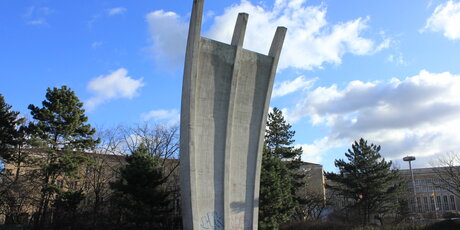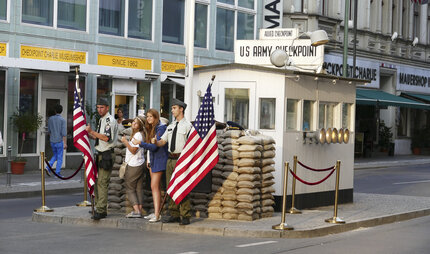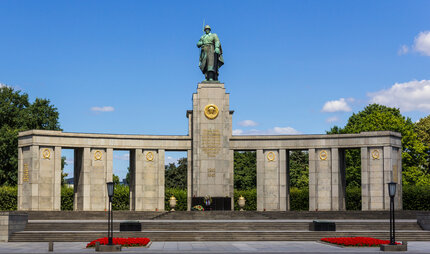
Airlift Memorial
Help came from the skies
For 322 days, all roads to West Berlin were blocked – the only way in and out was the airlift. The Luftbrückendenkmal in Tempelhof is a reminder.
When Germany was divided, West Berlin was completely surrounded by the GDR and cut off from West Germany. The Luftbrückendenkmal at the former Tempelhof Airport commemorates the time when bombers brought food and supplies to West Berlin.
The Luftbrückendenkmal in Berlin, Frankfurt and Celle
There are three identical airlift memorials in Germany. Besides the one at Tempelhof, the airports in Celle and Frankfurt am Main also have memorials reminiscent of a hungry hand reaching up. They commemorate the days of the Berlin airlift and all those who lost their lives in it. The curved concrete structures – designed by Eduard Ludwig – have three claws facing westwards to symbolise the three air corridors and the three Allied occupying forces. The original memorial in Tempelhof was dedicated in 1951, and the replicas in Frankfurt am Main and Celle, where the bombers loaded with food and supplies took off, were unveiled in 1985 and 1988.
West Berlin as an enclave
At the end of the Second World War, the Allies occupied Germany and divided it into zones, and the capital Berlin into sectors. Berlin was surrounded by the Soviet zone, and the eastern part of the city was also held by the victorious USSR. The western part of the city was occupied by the Americans, British and French. West Berlin became an enclave. After constant disagreements with the other occupying powers, and probably in response to the unilateral currency reform, the Soviets cut off all road and river access to Berlin on 24 June 1948. The western sectors were no longer accessible by normal transport routes.
The Berlin Airlift
The unexpected isolation of West Berlin led to serious supply problems, resulting in shortages of electricity and food. The Allies had to find some way of supplying the 2.2 million civilians and the soldiers stationed in their three zones. The only access that was not blocked was the air route, so an airlift was set up to supply the inhabitants. Every two to three minutes, an aircraft landed at Tempelhof Airport. The “candy bombers” brought vital supplies from The Royal Air Force base in Celle and the Rhein-Main Air Base in Frankfurt am Main to West Berlin. After 322 days, the Berlin Blockade was finally lifted.
In 2008, regular flights to Tempelhof Airport finally ceased. Since then, the Tempelhof airfield has been an open space in the middle of Berlin where you can jog, skate, have a barbecue or just relax.


